How to Water Your Garden by Hand
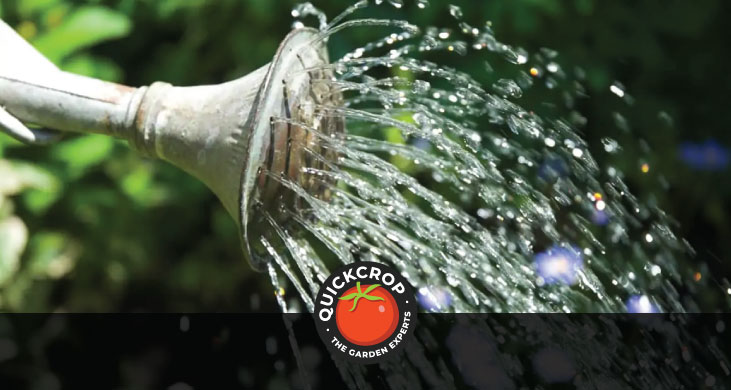
When it comes to watering the vegetable garden, convenience and automation has a lot going for it, but it’s not the be all and end all. Being a gardening ‘luddite’ whose weapon of choice is a watering can is perfectly fine. Indeed, hand watering has some advantages all of its own. You could argue that it fosters a true connection to your vegetable garden as you steadily help your plants along, observing their progress up close.
What are the Advantages of Watering by Hand?
Flexibility
When you’re taking the time to walk around and water each plant individually, you will be able to adjust the amount of water that each plant receives. As you gain experience in the garden, you will start to recognise the signs that a plant is being underwatered or overwatered. These can include symptoms like wilting plants, dry and cracked soil or yellow leaves. After a while this know-how can almost become second nature.

Galvanised Watering Can with Copper Trim 9l
View ProductThis isn’t to say that automated watering systems don’t allow for adjustments: with dripper systems, for example, you can adjust flow rates to different plant zones or beds. However, there’s a simple, more traditional attention to detail involved in pottering around and observing plants up close as you hand water. Carry a notebook with you and you can record developments, progress and so on. This is also a good way of catching early signs of plant disease or infestation.
Precision and Reach
Compared to some watering systems such as sprinklers, watering by hand is more precise and targeted. You can gently lift the leaves and aim at the root zone, which is where water will be best absorbed. When you’re watering plants at different heights (such as pots on greenhouse staging), you can use a hose or a watering can with a long attachment to make things easier.
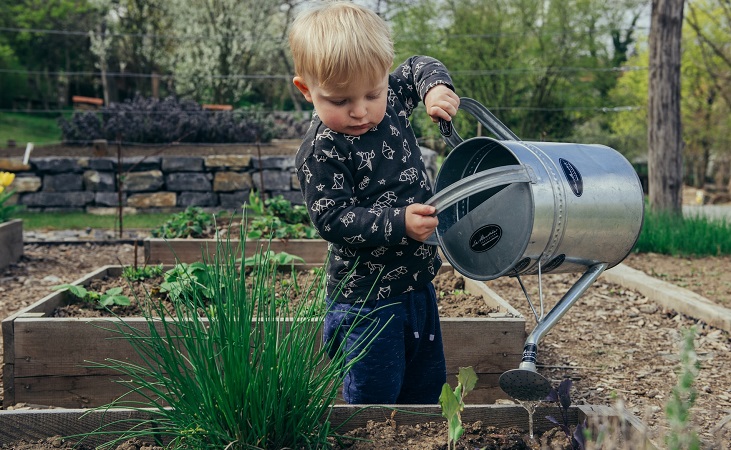
Watering with a soaker hose can also be a very precise method (arguably more so), but because the water doesn’t spread very far from the hose, it requires careful placement along root zones. This may or may not be a simple task, depending on how your garden is set up and how dense your plantings are.
A Meditative, Pleasant Activity
Sure, you can set up a super-effective watering system that saves you time and ‘hassle’, but that might not be what you want. As Mrs Doyle once said, ‘maybe I like the misery!’ One of the reasons why lots of us get bitten by the gardening bug is because it’s a very relaxing pastime, even meditative. Heading out to the vegetable garden with your watering can in hand is a great way to greet a new day, taking in the birdsong or the scents.

Flopro Hose & Cart System 30m
View Product
Cost and Simplicity
With automated watering systems there can be the initial cost of purchasing the system, as well as the logistics of setting it all up and applying the system to your own garden layout. With hand watering all you really need is a suitable container and a water source.
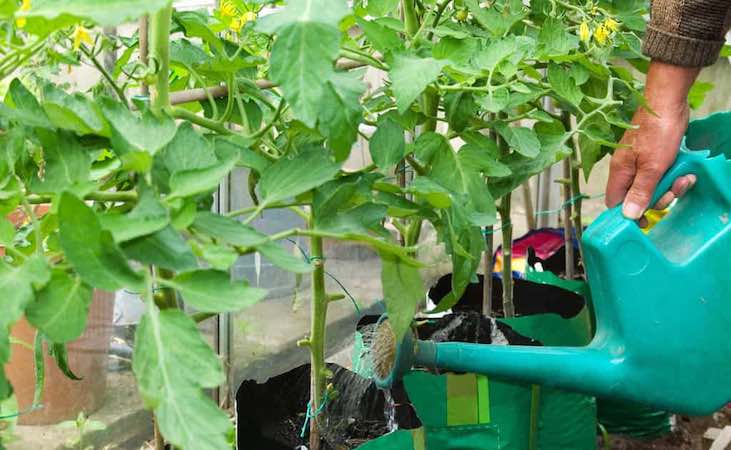
What are the Disadvantages of Watering by Hand?
Time Consuming
Watering by hand can involve a lot of walking to and fro, refilling and so on. This may or may not be a problem, but automating the process can free you up to do other garden tasks (or, indeed, non-garden tasks). Watering cans can also be heavy, so an automated watering system can be more forgiving on your back or joints.
Plants Depend On You
If hand watering is the only system you have in place, you may be stuck for options when you want to go on a break for a few days or when something unexpected comes up. Your plants can suffer if they’re left to fend for themselves in the middle of a warm and dry spell, for example. You can ask the neighbours or a friend to help you out, but ultimately this is one area where automatic watering systems can be very advantageous.

Grey 4.5l Watering Can
View ProductTips and Tricks for Effective Hand Watering:
The Finger Test
The appearance of the soil surface won’t tell you much, so one of the best ways of testing soil moisture is to insert your finger at least halfway into the soil. An alternative is to use a digital moisture meter.
Deep Watering
For the most part in the vegetable garden you want to aim for deep, infrequent watering as opposed to regular shallow watering. Deep watering allows the moisture to seep down into the soil beyond the top layers. This in turn encourages strong root growth as plants seek out soil moisture, rather than becoming reliant on us to come back with the watering can.
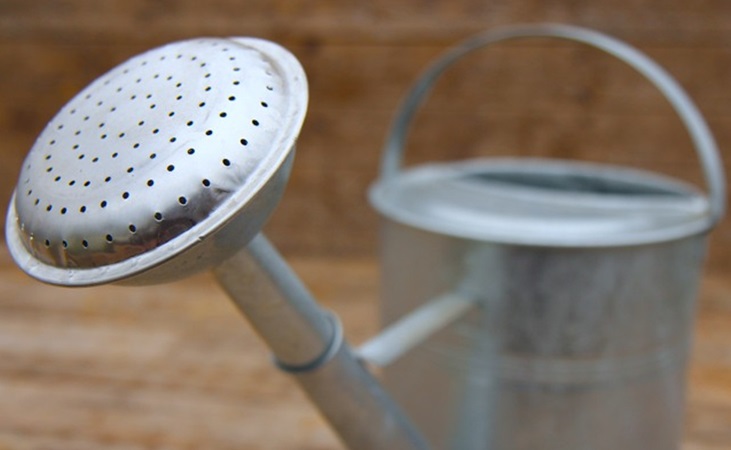
Be Gentle
When using a watering can or hose, it’s best to use a fine spray attachment (such as a ‘rose’). If the water flow is too strong, it can displace soil and expose the roots, which isn’t going to make for happy, robust plant growth.
Watering Plants in Pots
Plants in pots and containers will naturally be constricted in how far their roots can reach or seek out moisture. You want to keep slowly watering until the water is visible seeping from the holes at the bottom of the pot. It’s also important that pots are well-draining, so that plants are not left sitting in damp or waterlogged soil. Your choice of potting mix can help with this.

Bottle Top Waterer 4 Pack
View Product
Group Plants With Similar Needs Together
A good practice is to group plants together into distinct ‘zones’ according to whether they are relatively thirsty plants or more drought-tolerant. This is often done with drip irrigation systems, but there’s no reason you can’t apply the same principle when hand watering to make the process easier, more efficient and less mentally taxing.
Water Early or Late
It’s best to hand water plants early in the morning or in the evening. This allows plenty of time for it to be taken up by roots, whereas when watering closer to midday you run the risk of evaporation in the sunlight (the water that is, not you).
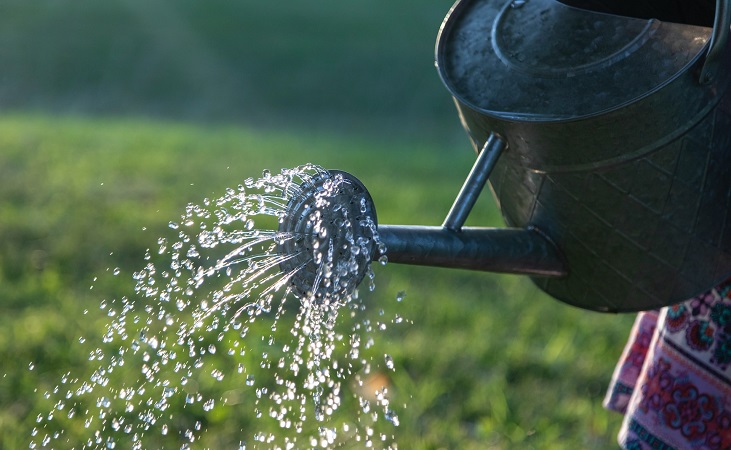
Avoid Watering from Above
It can be tempting to give rows of plants a good soaking from above, but it’s not the wisest or more efficient way of watering. Doing it this way can result in damp foliage, which in turn can lead to fungal disease or other problems such as leaf scorching.
Seedling Care
Water is essential for the initial phase of seed germination. Your initial watering after sowing should be quite heavy. It can be done in two or three stages, leaving about 30 minutes in between. These intervals allow the moisture to soak the compost and wet the shell of your newly sown seeds. The pots or trays can then be left alone for a few days until they dry out again before subsequent watering.
Once seedlings start to emerge, water gently with a rose-style attachment so that the young seedlings or the compost they are growing in is not inadvertently washed away.

Flopro Hosepipe - 30m Garden Hose
View Product The Seasons
Keep an eye on the weather. You can skip watering during rainy spells if your plants are outdoors, as rainwater will have all that they need. During dry spells or droughts on the other hand plants can suffer from heat stress and this is where watering can be crucial.
Know Your Soil Type
Some soil types will retain moisture better than others. Sandy soils, for example, will drain of moisture pretty fast: you may think that you’ve watered comprehensively, but there could be very little retained in the root zone. You can tackle this by watering more slowly and more often, but perhaps the best option (not just for sandy soil, but for any soil type that presents challenges) is to amend the soil with organic matter. In the long-term this will improve soil structure, water retention, aeration, drainage and so on.



